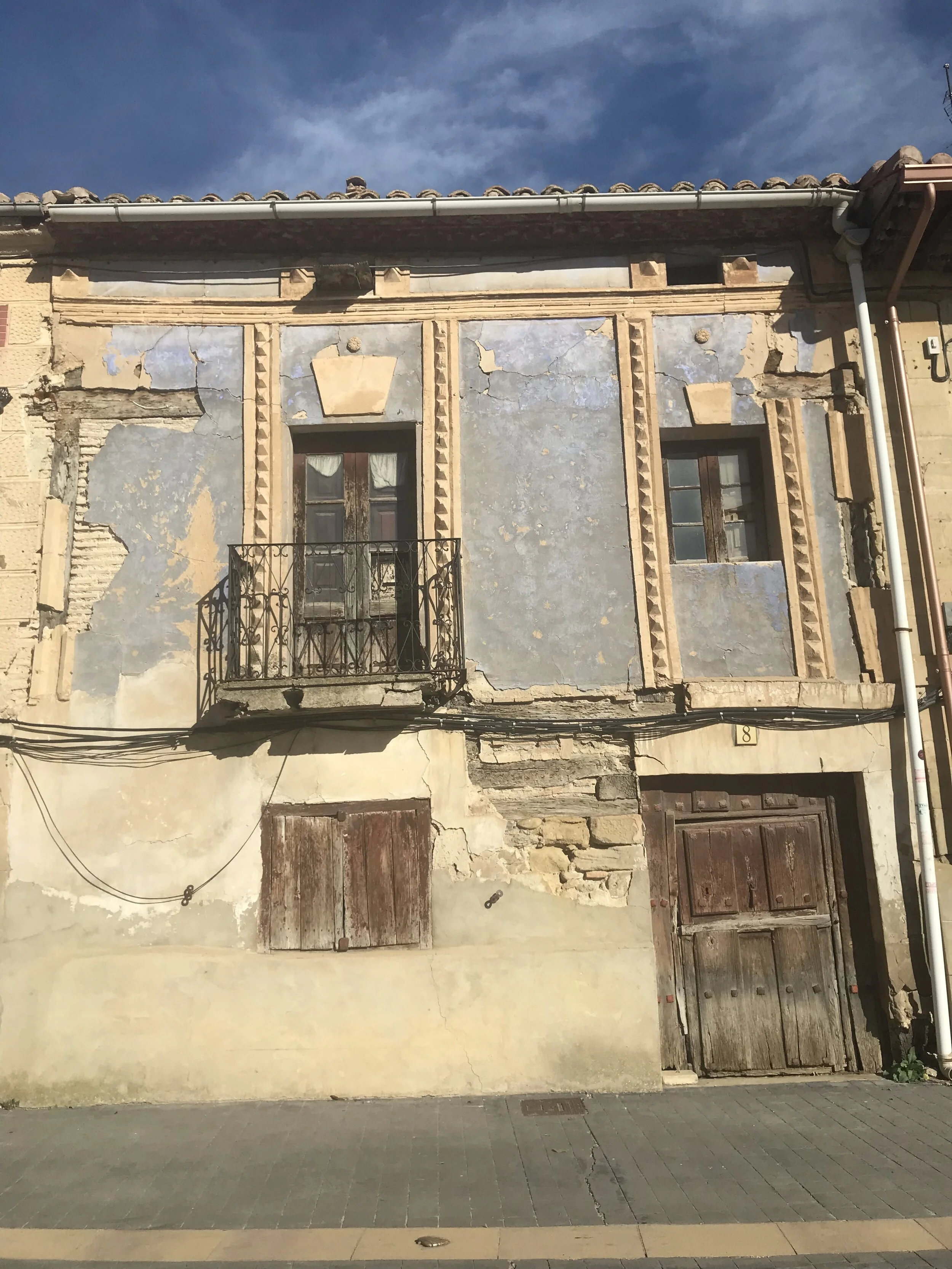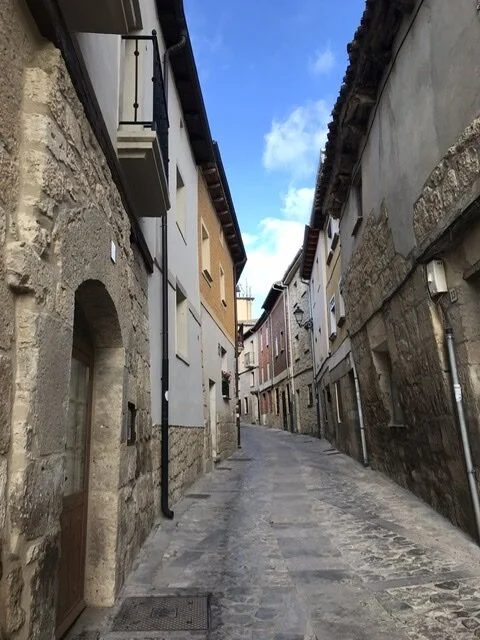Day 22
“Se vende” means “for sale.” Unfortunately, it seems to be the most popular sign option in most of these tiny towns the Camino passes through.
Rural Spain is quiet. I mean library-meets-church QUIET. When the little town’s pilgrim dorm is full, population may have just doubled.
Usually the bigger small towns (you know what I mean) each have a dorm and a cafe or two, catering mostly to pilgrims as far as I can see. (If there are locals around, they get served first, and I approve of this. At my 10 am stop, there always seems to be an older guy in front of me ordering a ham sandwich and red wine.) It’s a good day on the trail when these towns also have a bedroom-sized grocery store, too. There’s always a church, either 300 years old or brand new, and a pretty town square with a fountain and geraniums. Three cats, never older than teenagers, take turns darting through holes in stone barns.
Why no people? I’ve talked to quite a few pilgrims about this (it’s on everyone’s mind as the stillness is really quite striking) and done some thinking, reading, and googling and this is what I gather is going on.
1) The pilgrims are rolling through these towns during the middle of a work day, most likely. There’s nobody around because they’ve already driven to a bigger town for their day job.
2) Like where I’m from, fancier equipment over the years has meant fewer people can farm bigger areas so there is less labor needed in the agricultural industry in small towns. Lots of people have moved away to bigger cities for work.
3. One of my books about Spain mentioned that these little towns are now “weekend” getaways for city people, who have picked up 2nd homes in the country, often in the towns their grandparents were from. They come up from Madrid on festival days, vacations, and weekends. Spain has diverse traditions in its rural regions and I can see if most of your family ends up in a big city, it might be really important to you to keep a place in the country close to your roots, to expose your kids to your specific brand of Spanish culture. On my way to Cardeñuela, I walked into a little town to find it absolutely bursting — cars parked every which way, kids crawling on the fountain, a dance group in the square. Turns out it was Saturday, with some sort of school celebration going on, so everyone was out and about. Empty-seeming or not, these quiet little towns are really important.
4. The most eerie ghost town we walked through was called Ciruena, which is a suburb-size housing development outside Logroño that fell victim to the 2008 financial crisis. Apparently Spain was one of the European countries most hardest hit in 2008 — a decades-long boom in building stopped all at once, leaving tons of new houses that were suddenly unprofitable to sell and too expensive to tear down. So far those houses still haven’t sold. Nobody’s grandma is from Ciruena and nobody is going to buy their nostalgic 2nd home there to help preserve culture and conserve their ancestral village. The golf course is nice though.


